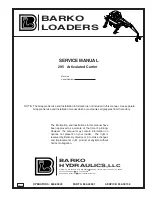
125
S:\Hp8960\E1960A GSM Mobile Test Application\A.04 Release\Reference_Manual\Chapters\prog_gen_integ.fm
Integrity Indicator
Integrity Indicator
Description
The test set can evaluate its own performance and make a determination as to the validity of a measurement
result. The test set evaluates the conditions surrounding a measurement and reports to the user its evaluation
of these conditions in a parameter called the measurement integrity indicator. A measurement integrity
indicator value is returned for every completed measurement. It is recommended that the user take advantage
of this feature in every measurement.
The returned value defines whether or not a problem was encountered by the measurement process. It is not,
however, guaranteed to be the only or root cause of the measurement problem. This is because some of the
conditions surrounding a measurement may interact and the test set may have insufficient information to
determine the root cause of the measurement problem. However, in most cases, the value returned is the most
likely cause of the problem.
The values returned by the measurement integrity indicator range from 0 to 16. Not all of the values are
available for each measurement or Test Application, if a value doesn’t apply it will not be available.
Example: Questionable Result for PGSM (15) and Questionable Result Due To Channel Mode (16) are GSM
only integrity indicator values.
NOTE
Measurement synchronization must be set to midamble in order for GSM measurements to
return integrity indicator (8, 9, 11).
(0) Normal: Indicates the measurement completed successfully without error and the result is accurate.
(1) No Result Available: Indicates that there is no measurement result and returns NAN (not a number).
(2) Measurement Timeout: Indicates that a measurement has timed out. The measurement timeout state
must be set to ON.
(3) Hardware Not Installed: Indicates that a piece of hardware is not installed in the test set, or the hardware
has failed in a way which leads the instrument controller to believe it isn’t installed.
(4) Hardware Error: Indicates that a hardware failure has occurred. These include failures such as a phase
lock loop out-of-lock, defective DSP samplers, or power detectors that can not be calibrated.
(5) Over Range: Indicates that the input signal is over range. The amplitude of the device-under test’s (DUT’s)
signal is causing the voltage at a DSP sampler to be above its maximum input level or the frequency is too
high or the voltage measured is beyond the maximum voltmeter range, either positive or negative.
(6) Under Range: Indicates that the input signal is under range. The amplitude of the DUT’s signal is not high
enough for the DSP sampler to produce accurate results with the measurement algorithm.
(7) Burst Short: Indicates that the burst duration is too short, or part of the burst was not sampled due to
improper triggering.
(8) Trigger Early or Fall Early: Indicates that the DUT’s burst amplitude fell prematurely or, due to an early
trigger (early relative to a transmitted burst) the measurement sampling operation terminated before the
falling edge of the burst.
(9) Trigger Late or Rise Late: Indicates that either the rising edge of the DUT’s burst was late or, due to a late
Summary of Contents for 8960 Series 10
Page 26: ...26 Contents ...
















































